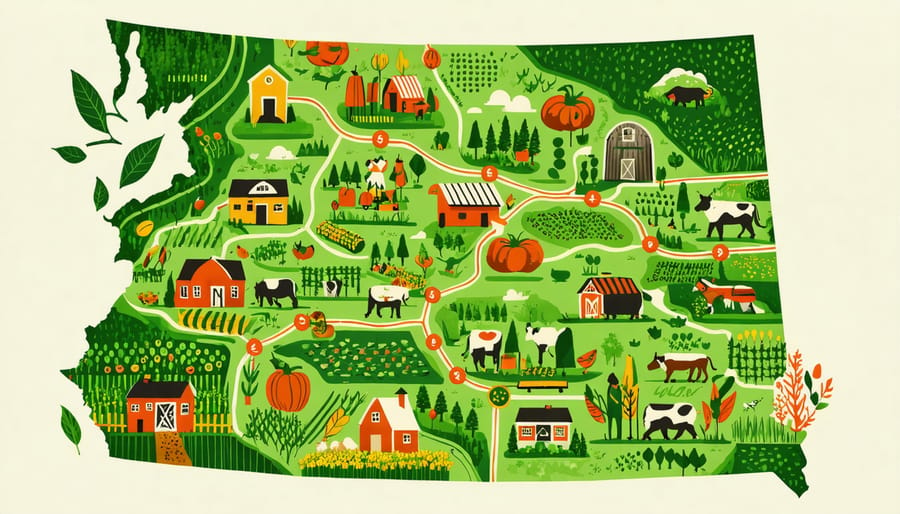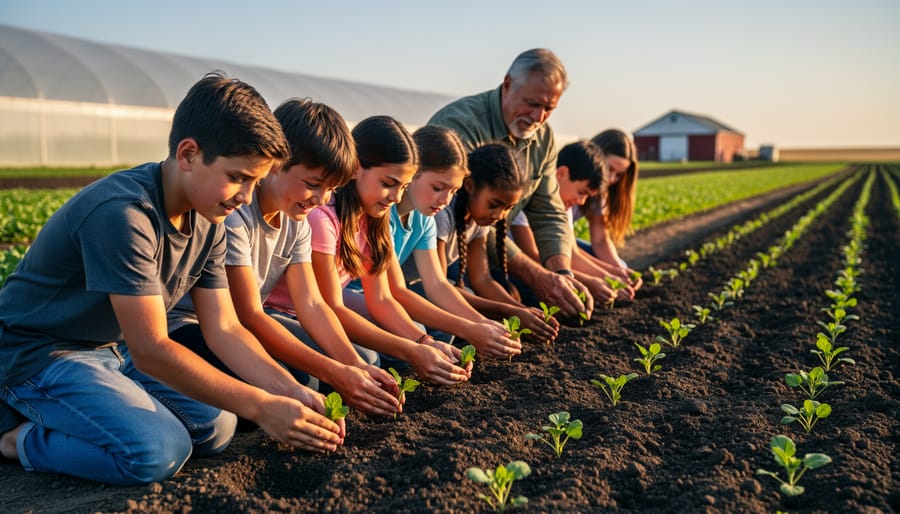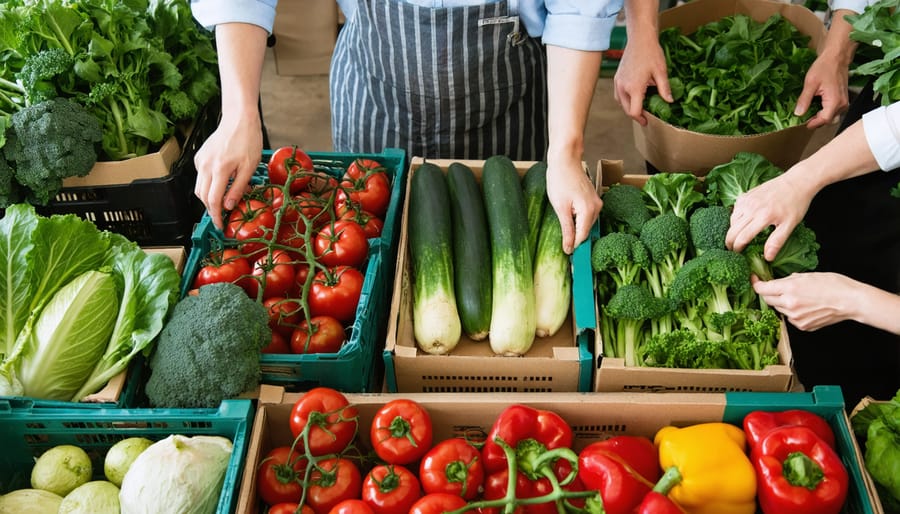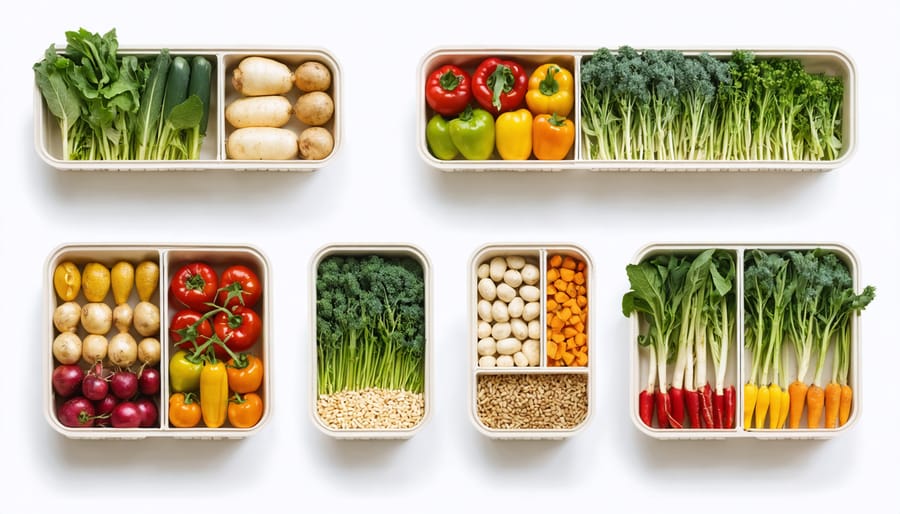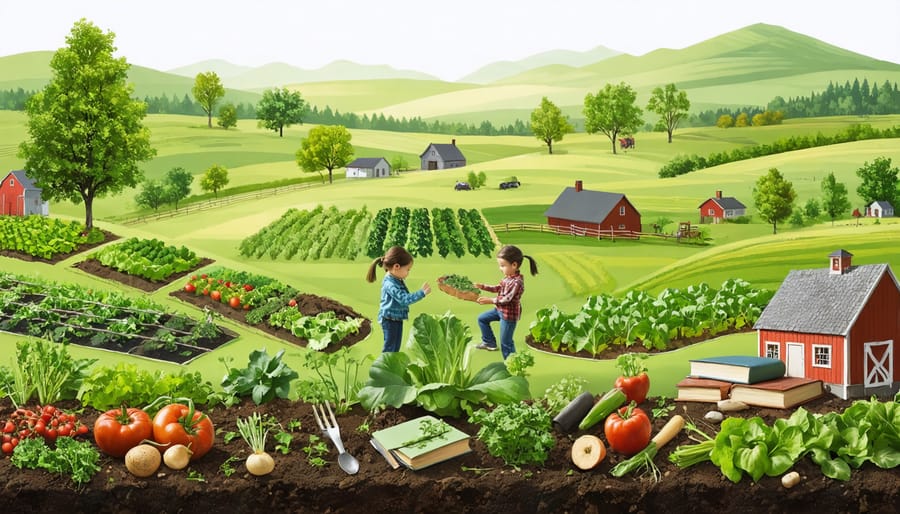Farm-to-table represents a revolutionary shift in how Canadians connect with their food, transforming the journey from field to fork into a direct relationship between farmers and consumers. Across Alberta’s fertile prairies, this movement has evolved from a culinary trend into a vital economic force, strengthening local food systems and supporting family farms from Medicine Hat to Grande Prairie. When produce travels mere kilometers instead of continents, communities benefit from fresher, more nutritious food while keeping their food dollars circulating within the local economy. For farmers, this direct-marketing approach eliminates middlemen, offering better profit margins and the opportunity to build meaningful relationships with their customers. As climate change and global supply chain disruptions reshape our food landscape, farm-to-table isn’t just about premium dining experiences—it’s becoming a cornerstone of resilient, sustainable food security for Canadian communities.
The Core Principles of Farm-to-Table Agriculture
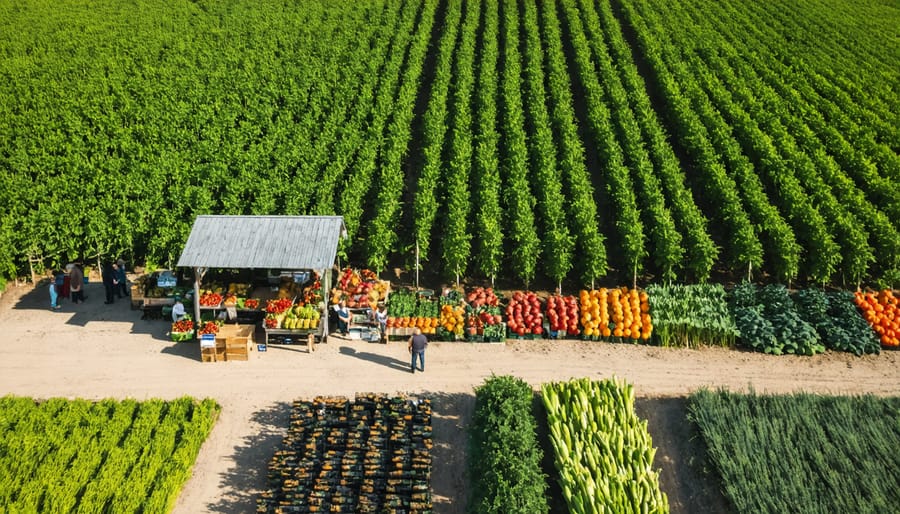
Direct Producer-Consumer Relationships
Direct producer-consumer relationships form the backbone of the farm-to-table movement in Alberta, creating stronger local food communities through meaningful connections. When farmers sell directly to consumers through farmers’ markets, farm stands, or Community Supported Agriculture (CSA) programs, they typically retain 80-100% of the food dollar, compared to just 15-20% in traditional distribution channels.
These direct relationships benefit both parties: farmers receive fair compensation for their work while gaining valuable feedback about their products, and consumers access fresh, seasonal produce while learning about their food’s origin. Many Alberta farmers report that regular face-to-face interactions with customers have helped them adapt their growing practices and crop selections to better serve local preferences.
Beyond the economic advantages, direct selling creates lasting community bonds. Farmers become trusted food advisors, sharing cooking tips, seasonal recipes, and agricultural knowledge. This educational component strengthens food literacy and builds consumer loyalty, ensuring sustainable support for local agriculture while fostering a more resilient local food system.
Seasonal and Local Production Focus
In Alberta’s diverse agricultural landscape, seasonal food production plays a crucial role in maintaining both farm sustainability and food quality. Working with nature’s rhythm allows farmers to maximize crop yields while minimizing resource inputs. During our warm season from May to September, local farms focus on growing hardy vegetables like root crops, brassicas, and leafy greens, while greenhouse operations extend growing capabilities throughout the year.
Following seasonal patterns reduces energy costs and eliminates the need for extensive storage facilities. Crops grown in their natural season typically require fewer pesticides and artificial inputs, resulting in better-tasting, more nutritious produce. For example, Alberta strawberries harvested in July offer superior flavour compared to imported alternatives, while fall-harvested squash stores naturally through winter.
This approach also strengthens regional food security by creating a reliable supply chain of fresh, local products. Many Alberta farmers have found success by partnering with restaurants and markets that embrace seasonal menus, creating a steady demand for their produce while educating consumers about the benefits of eating according to nature’s calendar.
Economic Benefits for Alberta’s Communities
Job Creation and Revenue Generation
The farm-to-table movement has become a significant driver of economic growth in Alberta’s agricultural communities, creating diverse employment opportunities across the food supply chain. Local farmers who adopt this model often find themselves expanding their operations, requiring additional farm hands, processing staff, and distribution personnel. For instance, the Medicine Hat Farmers’ Market has seen a 40% increase in vendor participation over the past three years, supporting over 75 direct farming jobs in the region.
Beyond primary agriculture, the model generates positions in related sectors such as local food processing, artisanal production, and specialized transportation services. Restaurant partnerships create demand for dedicated delivery drivers, market coordinators, and quality control specialists. The Lethbridge Local Food Hub, for example, currently supports 25 full-time positions and an additional 40 seasonal jobs across its network.
Revenue generation extends well beyond direct sales. Many Alberta farmers report 30-45% higher profit margins when selling through farm-to-table channels compared to conventional distribution methods. This increase comes from eliminating middleman costs and capturing retail-level pricing. Additionally, farm-to-table operations often diversify into agritourism, offering farm tours, cooking classes, and seasonal events that create new revenue streams.
The multiplier effect in local economies is substantial, with studies showing that every dollar spent in farm-to-table systems generates approximately $2.80 in local economic activity. This includes supporting adjacent businesses such as equipment suppliers, marketing services, and hospitality venues.
Multiplier Effects in Rural Areas
Farm-to-table initiatives create powerful economic ripple effects throughout rural communities, generating benefits that extend far beyond individual farms. When local restaurants and institutions commit to sourcing directly from nearby producers, they typically spend 2-3 times more on local food purchases compared to conventional supply chains. This increased spending circulates within the community, creating what economists call the “local multiplier effect.”
In Alberta’s rural regions, studies show that every dollar spent on local food generates an additional $1.87 in local economic activity. For example, when the town of Olds started its farm-to-table program in 2019, participating farmers reported an average 40% increase in revenue, leading to new hires and equipment purchases from local suppliers.
This economic boost extends to support industries as well. Local processors, packaging companies, and transportation services all benefit from increased agricultural activity. Additionally, farm-to-table operations often become agricultural tourism destinations, drawing visitors who spend money at other local businesses like shops and accommodations.
The employment impact is equally significant. Direct-to-consumer farms typically employ 13 people per million dollars in revenue, compared to just 3 people in conventional agriculture. This increased employment helps retain young people in rural communities and supports auxiliary businesses like accounting services and farm equipment repairs, creating a more resilient local economy.
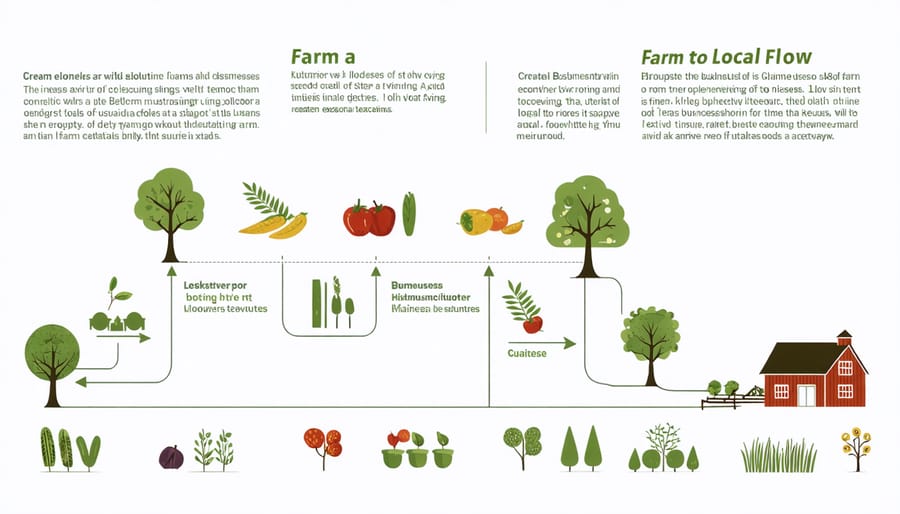
Success Stories: Alberta’s Farm-to-Table Champions
Small-Scale Success: The Family Farm Model
The Henderson family farm in Lacombe County represents one of Alberta’s most compelling direct sales success stories. Operating on just 40 hectares, the Hendersons have transformed their traditional grain operation into a diverse enterprise supplying fresh produce, free-range eggs, and grass-fed beef directly to local restaurants and farmers’ markets.
Their success stems from careful crop planning, relationship building with chefs, and maintaining transparent farming practices. By focusing on high-value crops like heirloom tomatoes and specialty greens, they’ve achieved profitability on a relatively small land base. Their weekly harvest schedule aligns perfectly with restaurant demands, ensuring premium prices for ultra-fresh products.
The Hendersons also host regular farm tours and seasonal events, strengthening community connections and building customer loyalty. Their approach demonstrates how small-scale farming can be both economically viable and environmentally sustainable. By eliminating middlemen and controlling their distribution, they retain a larger share of the food dollar while providing customers with peak-freshness products.
Their model proves that success in modern agriculture isn’t always about scale – it’s about smart marketing, quality products, and strong community relationships.

Scaling Up: Regional Distribution Networks
As farm-to-table initiatives gain momentum across Canada, innovative regional distribution networks are emerging to bridge the gap between small-scale farms and larger markets. The Southern Alberta Food Hub, launched in 2021, demonstrates how collaborative distribution can work effectively. This network connects over 50 local producers with restaurants, institutions, and retailers across a 200-kilometre radius, handling everything from cold storage to delivery logistics.
In the Red Deer region, the Central Alberta Food Growers Association has developed a sophisticated online ordering system that allows restaurants and consumers to purchase directly from multiple farms through a single platform. This system has helped participating farmers increase their revenue by an average of 35% while reducing individual transportation costs.
The success of these networks has inspired similar initiatives in other provinces. For instance, BC’s Farm Bound connects farmers across the Okanagan Valley, while Ontario’s 100km Foods serves the Greater Toronto Area. These distribution networks are proving that farm-to-table can work on a larger scale while maintaining product quality and supporting local agriculture.
For Alberta farmers considering joining such networks, the key advantages include shared marketing costs, consistent demand throughout the growing season, and access to larger institutional buyers they couldn’t reach independently.
Implementation Steps for Farmers
Transitioning to a farm-to-table model requires careful planning and a step-by-step approach. Start by assessing your current operations and identifying potential direct-sales channels in your local area. Research nearby restaurants, farmers’ markets, and food co-ops that align with your production capabilities.
Begin with a small-scale pilot project, perhaps dedicating 10-20% of your production to direct sales. This allows you to test the waters while maintaining your existing revenue streams. Develop relationships with local chefs and restaurant owners by inviting them to tour your farm and sample your products.
Establish proper food safety protocols and obtain necessary certifications required by Alberta Health Services. Consider investing in appropriate storage and transportation equipment to maintain product freshness. Many successful Alberta farmers start with a refrigerated van or small cooling unit to ensure quality during delivery.
Create a clear pricing structure that reflects both your production costs and the premium nature of farm-to-table products. Track your expenses meticulously, including fuel costs for deliveries and time spent on direct marketing activities.
Build your local presence through social media and community events. Many Alberta farmers find success by hosting farm tours or participating in agricultural tourism initiatives. Consider joining local food networks or cooperatives to expand your reach and share resources with other producers.
Remember to start small, grow gradually, and maintain open communication with your customers. Success in farm-to-table often comes from building strong, lasting relationships within your local food community.
The farm-to-table movement presents a significant economic opportunity for Alberta’s agricultural community. By connecting directly with restaurants, markets, and consumers, farmers can increase their profit margins while building lasting relationships within their communities. The growing demand for local, sustainable food has created a robust market that shows no signs of slowing down. As more Canadians prioritize knowing where their food comes from, farmers who embrace the farm-to-table concept position themselves for long-term success. Consider starting small by partnering with a local restaurant or joining a farmers’ market. Network with fellow producers, share resources, and leverage existing support systems through agricultural associations. Together, we can strengthen Alberta’s food sovereignty while creating a more resilient and profitable agricultural sector for future generations.

